About
Visit
Museum
Photos
Video
News
Events
Roof and Building Improvement Project - click on Announcements
thru Dec. 19 - noon choirs sing on weekdays



STATEHOUSE NEWS

2013 GREAT OHIOANS CHOSEN
Three Individuals Chosen to be Part of Special Statehouse Museum Exhibit
January 24, 2013
The Capitol Square Review and Advisory Board and the Capitol Square Foundation today announced the 2013 Great Ohioans. The 2013 honorees were presented by the Capitol Square Foundation and unanimously approved by the full membership of the Capitol Square Review and Advisory Board earlier today. The three honorees were selected from nominations submitted by individuals and organizations throughout Ohio.
The 2013 Great Ohioans include: Paul Brown, legendary football player and coach, James Garfield, U.S. President and Granville T. Woods, inventor.
For detailed information about each honoree, see the biographies below.
High resolution images of each of the winners are available at: http://www.ohiostatehouse.org/Multimedia/MediaLibrary/Collection.aspx?start=1&collectionId=107895.
“This year’s class of Great Ohioans recognizes three remarkable individuals who have made pre-eminent contributions to Ohio and the nation,” said Senator Richard Finan, Chairman of the Capitol Square Review and Advisory Board. The Great Ohioan Award commemorates special Ohioans who have played a significant role in an event or series of events of lasting significance in World, American or Ohio history. To be selected for the Great Ohioan Award, the nominee must have resided in Ohio for a minimum of five years. In addition, at least 25 years must have passed since the event in which the nominee participated is being commemorated.
Since 2003, 30 other Great Ohioans have been recognized with the award for the special roles they played in history. The Great Ohioans include:
2003 Class: Orville and Wilbur Wright, inventors of powered flight; John Glenn, first American to orbit the earth; and Neil Armstrong, first man to walk on the moon;
2008 Class: Jesse Owens, Olympic track and field star; Thomas Edison, inventor; Harriet Beecher Stowe, author; James Thurber, journalist and author; Colonel Charles Young, military leader; Dr. George Crile, founder of the Cleveland Clinic;
2009 Class: Catherine Nelson Black, health care humanitarian; Salmon P. Chase, Ohio Governor, Secretary of the Treasury and Supreme Court Chief Justice; Paul Laurence Dunbar, poet and author; Charles F. Kettering, inventor; Eddie Rickenbacker, World War I fighter ace; Denton T. “Cy” Young, baseball legend;
2010 Class: James M. Cox, journalist, member of the United States House of Representatives, Ohio Governor; Florence Ellinwood Allen, first woman Ohio Supreme Court Justice; Bob Feller, baseball legend; and Bill Willis, National Football League hall of famer;
2011 Class: Ulysses S. Grant, Civil War General and U.S. President; William Moore McCulloch, Speaker of the Ohio House of Representatives, U.S. Congressman and civil rights advocate; William Howard Taft, U.S. President and U.S. Supreme Court Chief Justice; and Harriet Taylor Upton, women’s rights advocate and author;
2012 Class: Gordon Battelle, philanthropist and researcher; Dominic Salavtore “Don” Gentile, World War II fighter pilot; Washington Gladden, clergyman and social reformer; Albert Belmont Graham, founder of the 4-H program; Albert Sabin, medical researcher best known for the oral polio vaccine; and William T. Sherman, Civil War general, Lancaster.
“Each Great Ohioan has created a legacy that will be passed on to others. We hope that every Statehouse visitor is inspired by the accomplishments of each one of the great men and women who we have recognized with this honor,” said Charles Moses, Chairman of the Capitol Square Foundation.
Great Ohioan honorees and their achievements are chronicled in a permanent Great Ohioan exhibit, which is part of the Ohio Statehouse Museum. The Great Ohioans exhibit presents recipients of the Great Ohioan award on a large touch monitor. A host of options are available to visitors to explore the life and accomplishments of each recipient.
While countless Ohioans have performed great actions for their community and beyond, only a select few have been named a “Great Ohioan.” This exhibit allows visitors to have a greater understanding of the recipients of the Great Ohioan award and discover how they affected local, national and world history. The exhibit uses videos, photos, facts and web based technology to explore the life and legacy of each Great Ohioan.
Opened in 2009, the Ohio Statehouse Museum features high-tech, interactive exhibits that make learning about all three branches of state government fun. The museum is packed with historical artifacts and images that tell the stories of how government works and who has come to serve their fellow citizens.
The Museum includes 5,000 square feet of exhibit space on the ground floor of the Ohio Statehouse that enriches the experience of school children and visitors. The Museum offers exhibits that encourage visitors to participate in the government process by making choices, expressing their opinions, comparing viewpoints and even becoming a part of an exhibit by giving a State of the State address. A thrust on contemporary issues enables visitors to better relate to the governing process.
All citizens, especially teachers and students, are encouraged to participate in the nomination process to select the 2014 class of honorees. A complete explanation of the nomination process and nomination forms can be found online at www.capitolsquarefoundation.org.
To view this press release and others, visit www.ohiostatehouse.org.
The Ohio Statehouse is more than a monument to our past; it's where history happens! The Ohio Statehouse is open weekdays from 7 a.m. to 6 p.m.; weekends from 11 a.m. to 5 p.m.; closed holidays. The Ohio Statehouse Museum is open weekdays from 9 a.m. to 5 p.m.; weekends from noon to 4 p.m.; closed holidays. Admission is free. Free guided tours are offered weekdays on the hour from 10 a.m. to 3 p.m., and weekends from noon to 3 p.m. Tours depart from the Map Room easily accessible from the Third Street entrance. Groups of 10 or more are requested to call in advance to ensure a guide is available. Contact 888/OHIO-123 for more information or to schedule a group tour. For more information about the Ohio Statehouse visit www.ohiostatehouse.org.
The Ohio Statehouse is handicapped accessible and senior friendly. The Capitol Square complex was restored to allow for greater access by individuals living with disabilities. Ohio Statehouse public programs and events are held in accessible and barrier free areas of the building so that everyone can participate. Ohio Statehouse visitors needing disability-related accommodations in order to fully participate in an event may contact the Capitol Square Review and Advisory Board at statehouse@csrab.state.oh.us or 614/752-9777 to communicate special needs. Please allow three weeks for arrangements to be completed.
About the Capitol Square Review and Advisory Board
The Capitol Square Review and Advisory Board is responsible for maintaining the historic character of the Statehouse and Capitol Square while providing for the health, safety and convenience of those who work in or visit the complex. The Ohio Statehouse Museum Education Center coordinates tours of Capitol Square and provides information about the buildings, their history and Ohio's government.
The Ohio Statehouse shines a light on the history of this great edifice, its symbolic meaning and its vital historic and ongoing connections to the daily lives of all Ohioans.
About the Capitol Square Foundation
The Capitol Square Foundation was established in 1987 to increase public awareness of and to involve citizens in the history of the Ohio Statehouse. Its purpose is to raise funds to obtain, restore and maintain artifacts and other items related to the history and enhancement of the grand monument and its adjoining grounds, so that the seat of Ohio's government may reflect the dignity of the state and its citizens.
BIOGRAPHIES OF THE 2013 GREAT OHIOAN AWARD WINNERS
PAUL BROWN
Paul Brown (1908-1991), perhaps more than any other person, is responsible for making pro football coaching the exact science it is today. When he organized the Cleveland Browns in the new All-America Football Conference in 1946, he started doing things no other pro coach had tried.
Brown had a background of exceptional success as a high school, college and military service coach when he was given his first pro assignment with the new Cleveland team. Immediately, he hired a full-time staff on a year-round basis, and he instituted a system for scouting college talent on a scale never before imagined by other pro teams. In his handling of his team, he became the first to (1) use intelligence tests as a hint to a player's learning potential, (2) use notebooks and classroom techniques extensively, (3) set up complete film clip statistical studies and (4) grade his own players based on film study. Brown, always a firm disciplinarian, was the first coach to keep his players together at a hotel the night before a home game as well as a road game.
From the strategic standpoint, he started the practice of calling plays from the sideline by utilizing alternating guards as messengers. He developed detailed pass patterns for the offense that were designed to pick holes in the defense, but then he devoted his efforts to perfecting the kind of a defense that could counteract a pattern passing attack.
Brown built a pro football dynasty in Cleveland, posting a 167-53-8 record, four All-American Football Conference (AAFC) titles, three National Football League (NFL) crowns and only one losing season in 17 years. In the four seasons the Browns operated in the AAFC, they lost just four games. When the Browns joined the NFL in 1950, they continued their winning ways playing in the next six championship games and winning the title in 1950, 1954, and 1955.
In 1963, Art Modell, the majority owner of the Cleveland Browns, made the controversial decision to fire Paul Brown. The two had been at odds from the beginning of their relationship. In 1966, Brown sold his stake in the Cleveland team and traveled with Ohio Governor James A. Rhodes, making presentations on behalf of Cincinnati for an American League Franchise.
In 1968, Brown officially returned to football as principal owner, general manager, and coach of the Cincinnati Bengals of the NFL’s rival American Football League (AFL). He stepped down as coach in 1976, but remained the team’s president. Following Paul Brown’s death in 1991, his son Mike took over as the team president.
Paul Brown was born in Norwalk, Ohio in 1908. He was inducted into the Professional Football Hall of Fame in 1967. He also has a football stadium named after him—Paul Brown Stadium in Cincinnati, which opened in the summer of 2000.
JAMES GARFIELD
James Abram Garfield (1831-1881) was the twentieth President of the United States.
Garfield was born on November 19, 1831, in Orange, Ohio. Garfield's father died in 1833, and James spent most of his youth working on a farm to care for his widowed mother. At the age of seventeen, Garfield took a job steering boats on the Ohio and Erie Canal.
Garfield received minimal schooling in Ohio's common schools (public schools.) In 1849, he enrolled in the Geauga Seminary in Chester, Ohio. After briefly serving as a teacher, Garfield attended the Western Reserve Eclectic Institute (now Hiram College) in Hiram, Ohio. He transferred to Williams College, in Williamstown, Massachusetts, and graduated in 1858. He returned to Hiram College in that same year as a professor of ancient languages and literature. He also served as Hiram's president until the outbreak of the American Civil War. In 1859, Garfield began a political career, winning election to the Ohio Senate as a member of the Republican Party.
During the Civil War, Garfield resigned his position at Hiram College and joined the Union Army. In 1862, when Union victories had been few, he successfully led a brigade at Middle Creek, Kentucky, against Confederate troops. At 31, Garfield became a brigadier general, two years later a major general of volunteers. He resigned from the army on December 5, 1863.
Garfield resigned his commission because Ohio voters had elected him to the U. S. House of Representatives. He served nine consecutive terms in the House of Representatives before he was elected President of the United States in 1880. In Congress, Garfield was a supporter of the Radical Republicans. He opposed President Andrew Johnson's lenient policy toward the conquered Southern states and demanded the enfranchisement of African-American men. He was appointed by the Ohio legislature to the U. S. Senate in January 1880. He declined the office, because he was elected president a few months before he was to claim his seat in the Senate.
Garfield served for only four months before he was shot by Charles J. Guiteau. Guiteau had sought a political office under Garfield's administration and was refused. Angered by his rejection, Guiteau shot Garfield while the president waited for a train in Washington, D.C. Garfield lived for two more months, dying on September 19, 1881. While Garfield accomplished little as president, his death inspired the U.S. Congress and his successor, President Chester A. Arthur, to reform the public service system with the Pendleton Civil Service Reform Act in 1883. Rather than having the victors in an election appoint unqualified supporters, friends, or family members to positions, the Civil Service was created to assure that at least some office holders were qualified for their positions.
The National Park Service operates the James A. Garfield National Historic Site in Mentor, Ohio. Garfield ran his 1880 presidential campaign from the front porch of the home.
GRANVILLE T. WOODS
Granville T. Woods (1856-1910) surpassed any other African-American inventor of his time, eventually becoming known as the “black Thomas Edison.” He was born in Columbus, Ohio, in 1856.
Living in Cincinnati, Ohio, in 1884, he started his inventive record, receiving his first patent for a steam boiler furnace in June, 1884. Later that year he received a patent (No. 308,817) for a “Telephone Transmitter.” The following year he was granted another patent (No. 315,368) for an “Apparatus For Transmission of Messages by Electricity.” While his inventions relate principally to electricity, he also received patents for an “amusement apparatus” in 1899; an incubator in 1900; automatic airbrakes in 1902, 1903 and 1905.
His inventions in telegraphy include several patents for transmitting messages between moving trains and several for others transmitters. He patented fifteen inventions for electric railways and as many more devices for electrical control and distribution.
Earlier in his career he organized the Woods Electric Company in Cincinnati. This company took over many of his early patents by assignment, but as his reputation grew, he found a market for them with technical and scientific corporations. U.S. Patent Office records show that many of his patents were assigned to General Electric Company of New York; Westinghouse Air Brake Company of Pennsylvania; American Bell Telephone Company of Boston; and American Engineering Company of New York.
Granville Woods’ brother, Lyates Woods, is jointly credited in the invention of several machines.
Woods’ life was not without controversy; glory in his achievements led to unwarranted lawsuits filed by Thomas Edison who presumed he himself was the first inventor of the multiplex telegraph. The legal system eventually proved Woods to be the original inventor, however Edison did not accept the verdict easily. In an attempt to gain Woods’ inventions, Edison extended an offer for a prominent position in the engineering department of Edison Electric Light Company in New York. Favoring his independence, Granville T. Woods did not accept.
Woods died in New York on January 30, 1910.
# # #
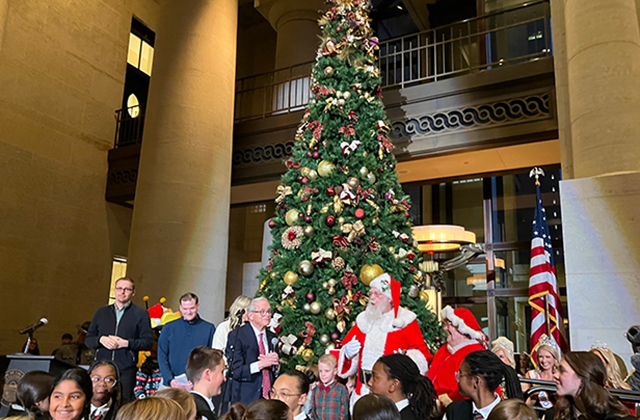 Holiday Festival and Tree Lighting 2025
Holiday Festival and Tree Lighting 2025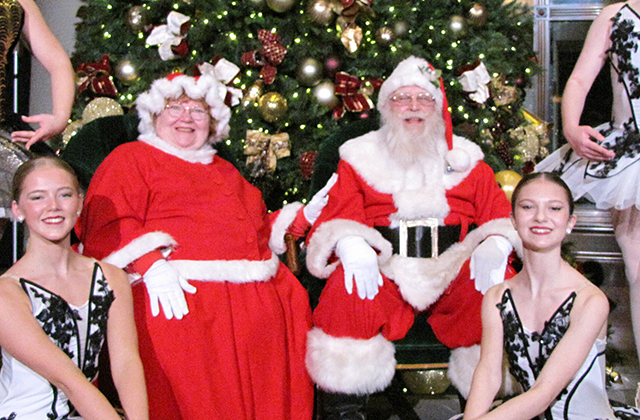 Holiday Santa Photos 2025
Holiday Santa Photos 2025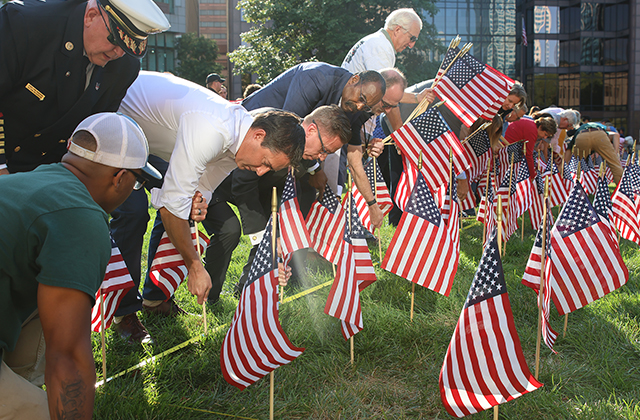 Flags for 9-11 in 2025
Flags for 9-11 in 2025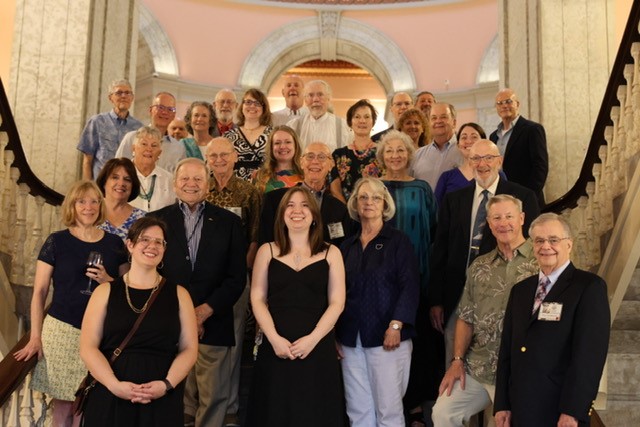 2025 Volunteer Appreciation Dinner
2025 Volunteer Appreciation Dinner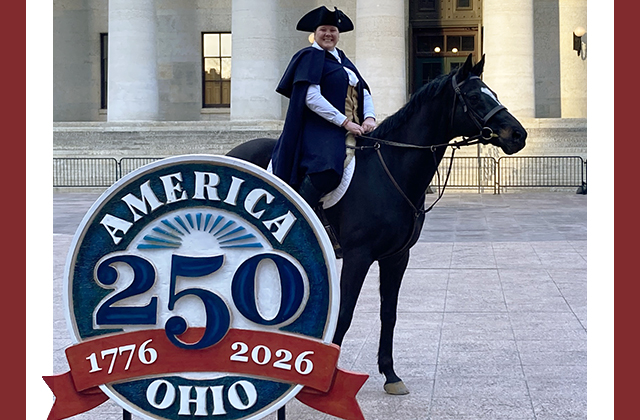 America 250-Ohio
America 250-Ohio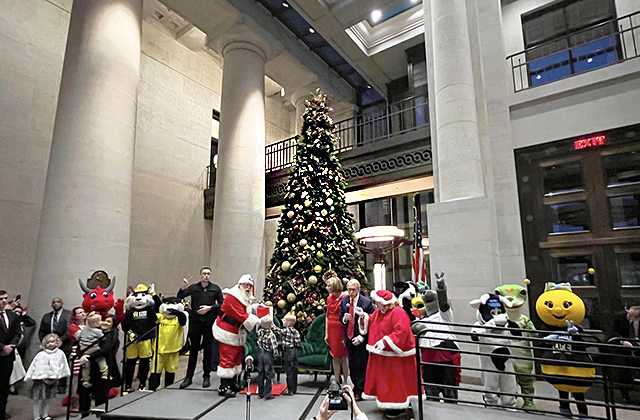 Holiday Festival and Tree Lighting 2024
Holiday Festival and Tree Lighting 2024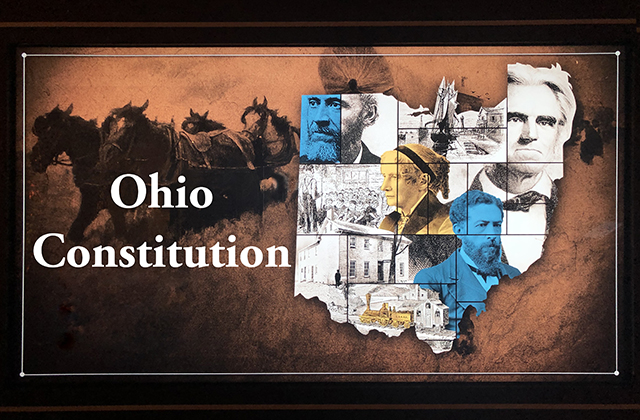 Ohio Constitution Videos
Ohio Constitution Videos Ohio Statehouse Videos
Ohio Statehouse Videos






